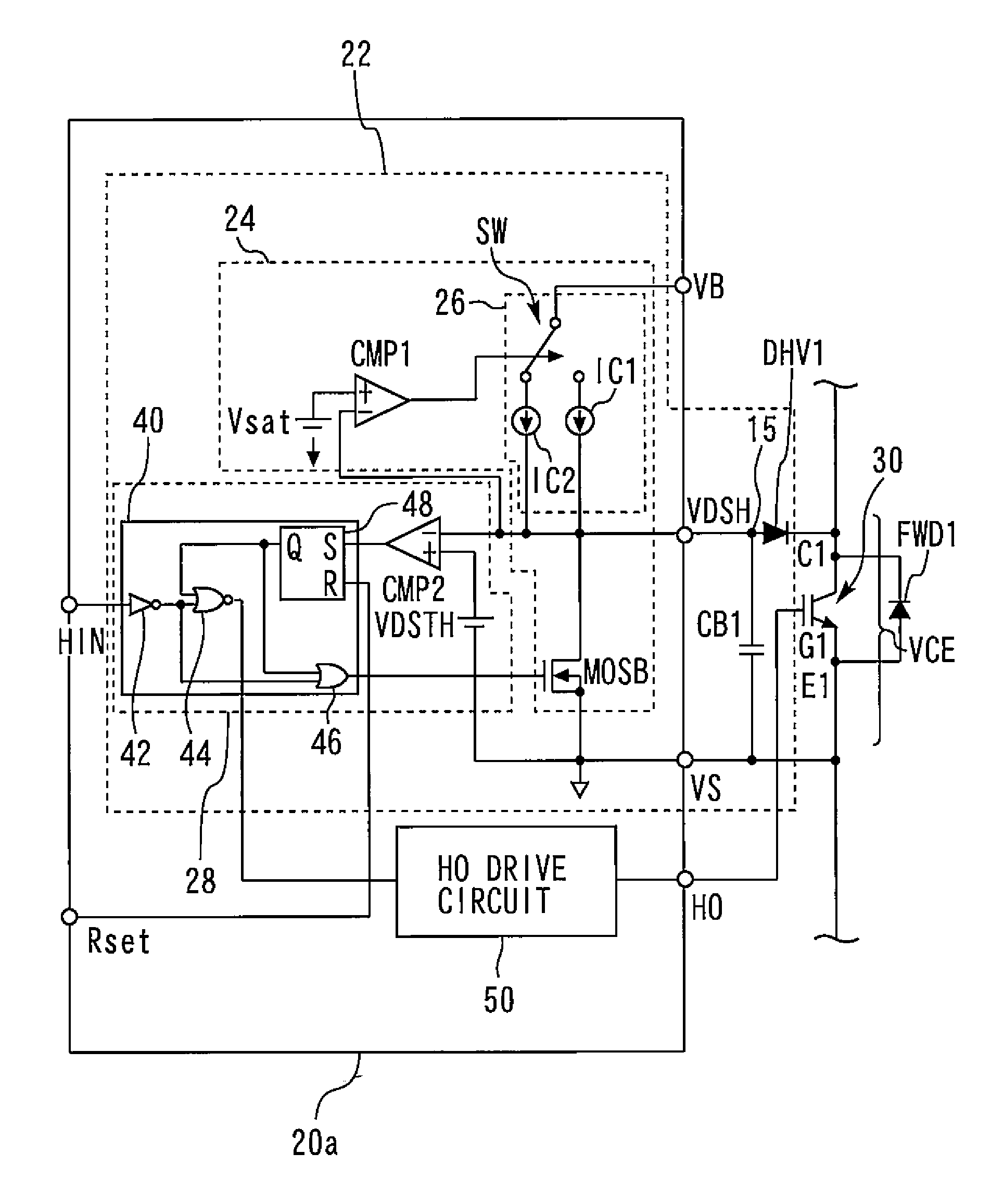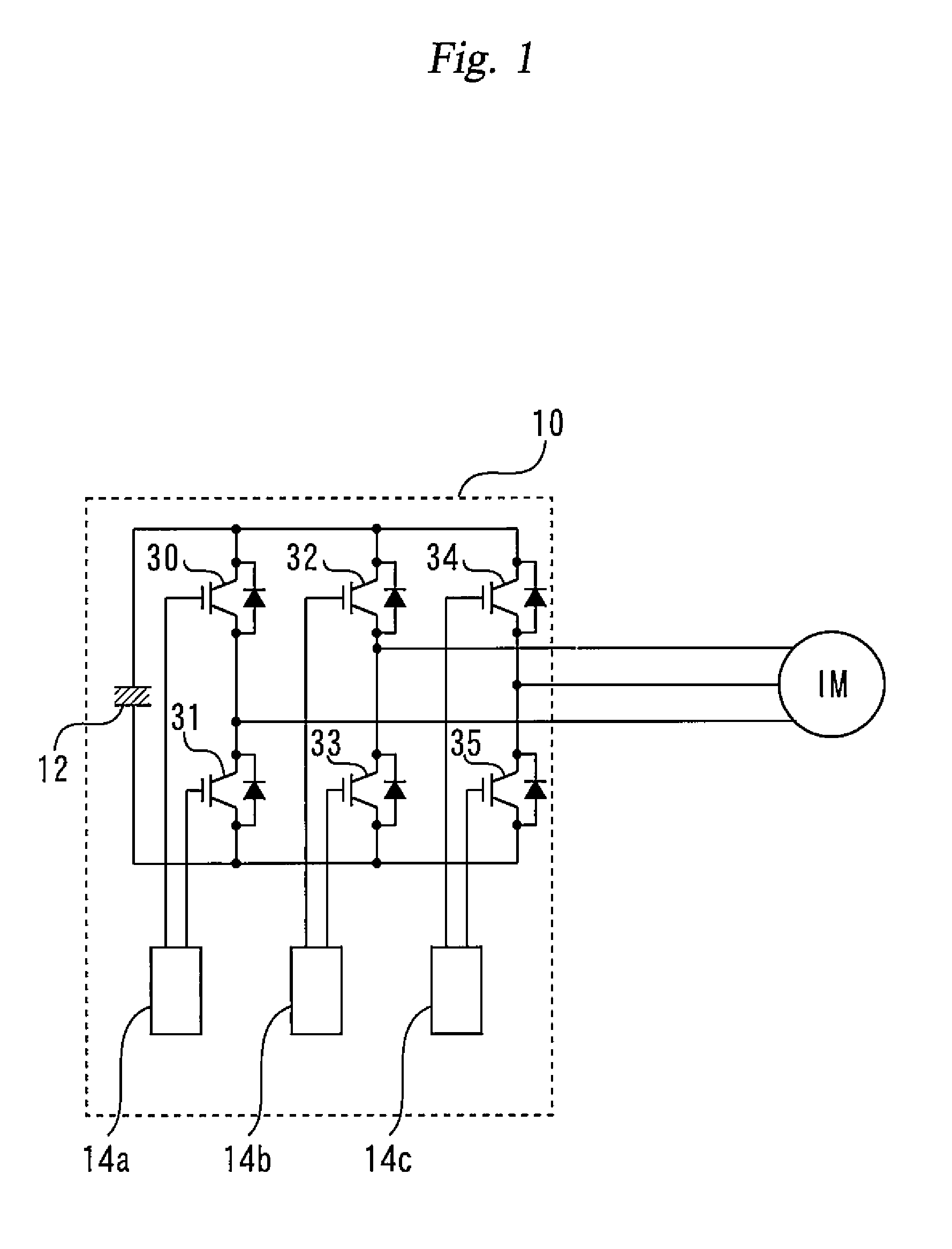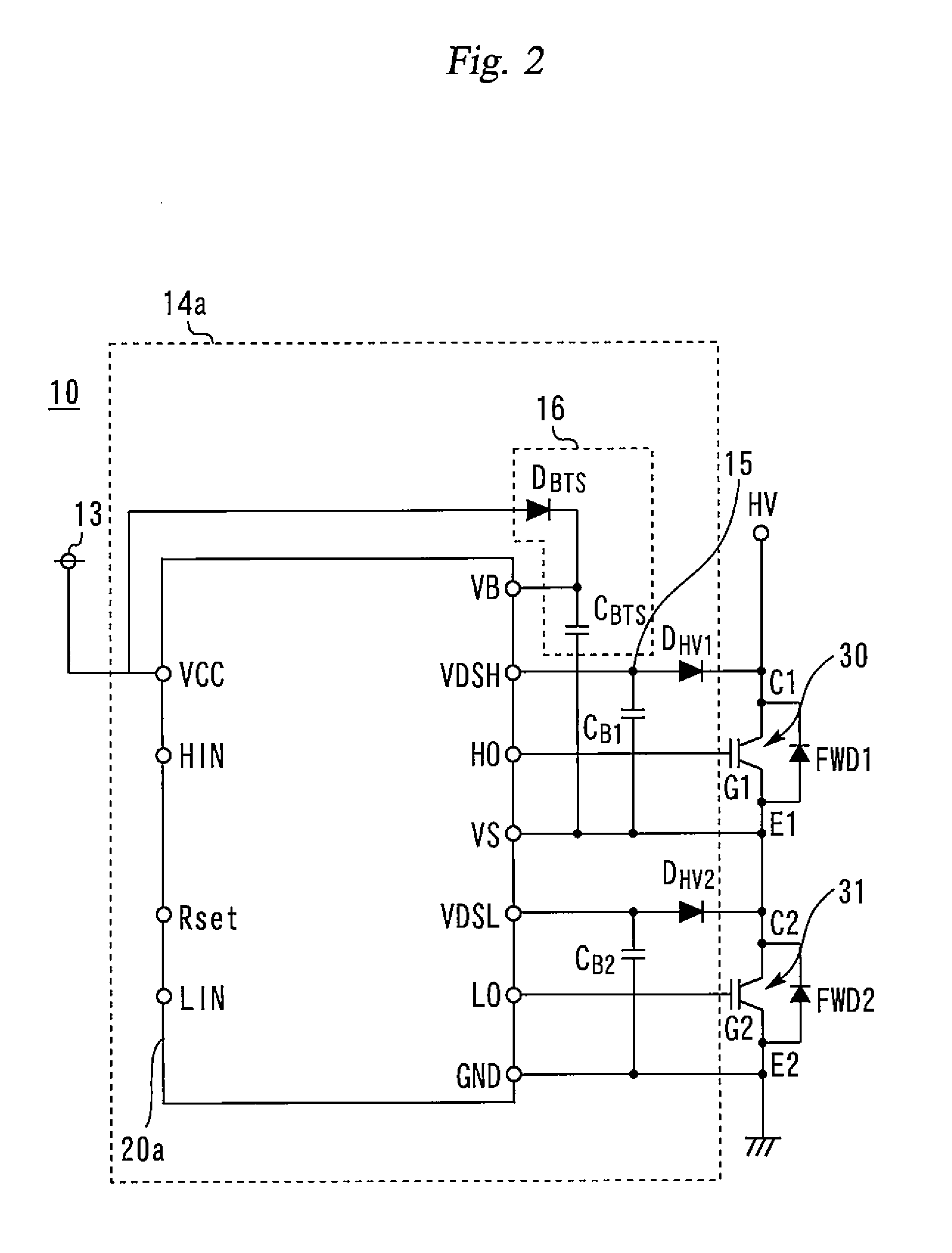Driving device for semiconductor elements, and semiconductor device
- Summary
- Abstract
- Description
- Claims
- Application Information
AI Technical Summary
Benefits of technology
Problems solved by technology
Method used
Image
Examples
embodiment 1
(Functions and Advantages of Embodiment 1)
[0145]In the desat detection circuit section 22, the blanking time is set with the blanking capacitive element CB1. The mechanism using the blanking time is such that the detection of a non-saturation voltage is not immediately recognized as the occurrence of a short circuit; if a time period during which a non-saturation voltage is detected in the on-state after turn-on exceeds the blanking time, it is determined that the occurrence of a short circuit is sensed.
[0146]This blanking time setting enables avoidance of erroneous detection of the normal non-saturation voltage state immediately after turn-on. However, this blanking time also has an influence even when a short circuit occurs during the operation in the on-state of the IGBT 30 after the saturation voltage is once reached after turn-on.
[0147]In this respect, in the present embodiment, an increase in the collector-emitter voltage VCE from the saturation voltage (non-saturation) once t...
embodiment 2
[0153]FIG. 8 is a circuit diagram showing the configuration of a driving device for semiconductor elements according to Embodiment 2 of the present invention and components on the periphery of the driving device for semiconductor elements. The driving device for semiconductor elements according to Embodiment 2 is HVIC 220a. The HVIC 220a and the external circuit form a desat detection circuit section 222. The desat detection circuit section 222 has the same configuration as that of the desat detection circuit section 22 according to Embodiment 1 except for the configuration of a charging circuit section 224 (constant current supply section 226 in particular).
[0154]It is assumed that, except for the above-descried points of difference, a semiconductor device according to Embodiment 2 has the same configuration as that of the semiconductor device (inverter device 10) according to Embodiment 1, and that the driving device for semiconductor elements according to Embodiment 2 has the sam...
embodiment 3
[0158]FIG. 10 is a circuit diagram showing the configuration of a driving device for semiconductor elements according to Embodiment 3 of the present invention and components on the periphery of the driving device for semiconductor elements. The driving device for semiconductor elements according to Embodiment 3 is HVIC 320a. The HVIC 320a and the external circuit form a desat detection circuit section 322. The HVIC 320a has the same configuration as that of the HVIC 220a according to Embodiment 2 except for the configuration of a charging circuit section 324. The charging circuit section 324 has the same configuration as that of the charging circuit section 224 except for a hysteretic comparator CMPH substituted for the comparator CMP1.
[0159]It is assumed that, except for the above-descried points of difference, a semiconductor device according to Embodiment 3 has the same configuration as that of the semiconductor device according to Embodiment 2, and that, with the same exceptions...
PUM
 Login to View More
Login to View More Abstract
Description
Claims
Application Information
 Login to View More
Login to View More - R&D
- Intellectual Property
- Life Sciences
- Materials
- Tech Scout
- Unparalleled Data Quality
- Higher Quality Content
- 60% Fewer Hallucinations
Browse by: Latest US Patents, China's latest patents, Technical Efficacy Thesaurus, Application Domain, Technology Topic, Popular Technical Reports.
© 2025 PatSnap. All rights reserved.Legal|Privacy policy|Modern Slavery Act Transparency Statement|Sitemap|About US| Contact US: help@patsnap.com



